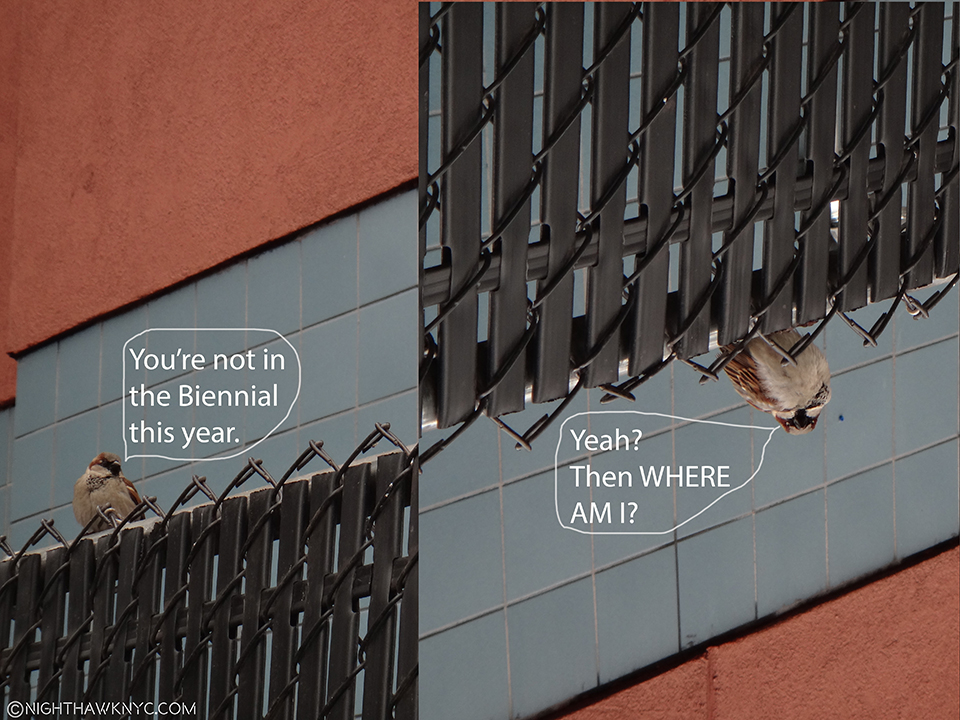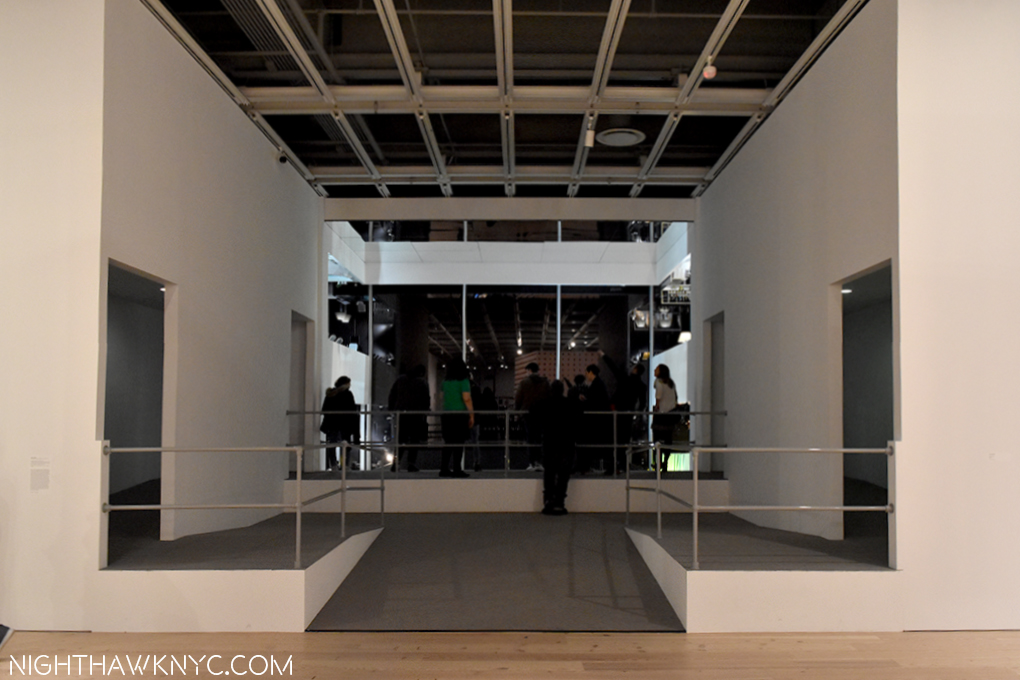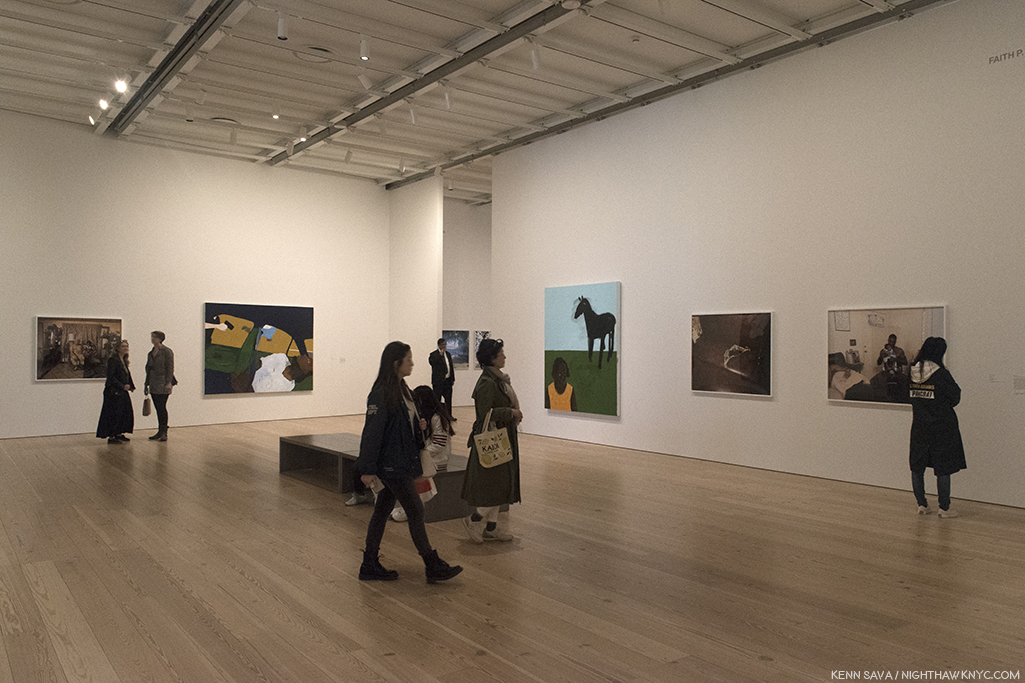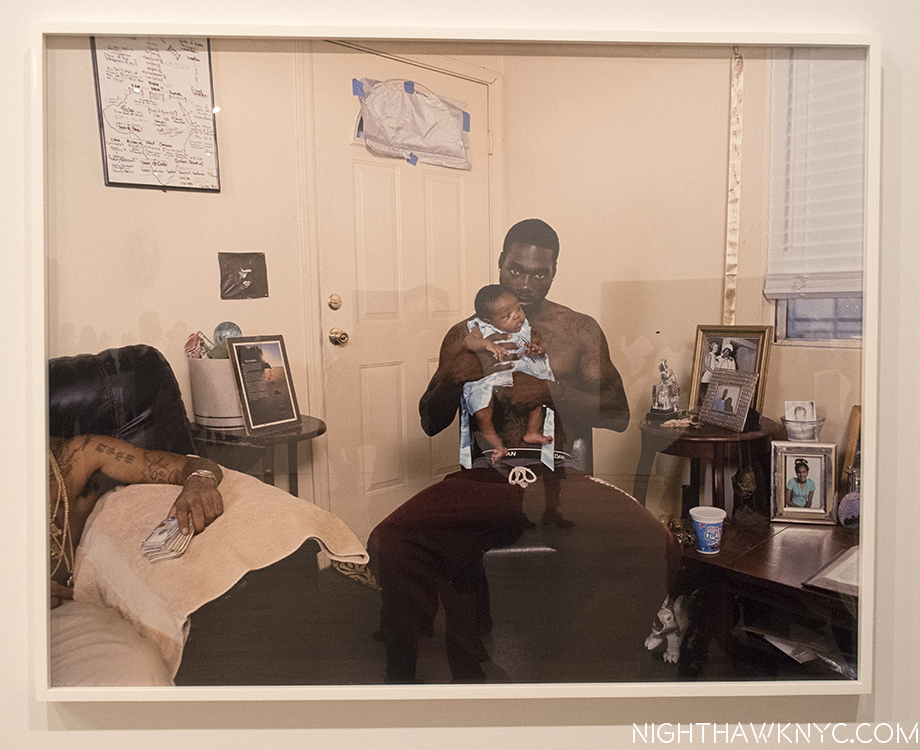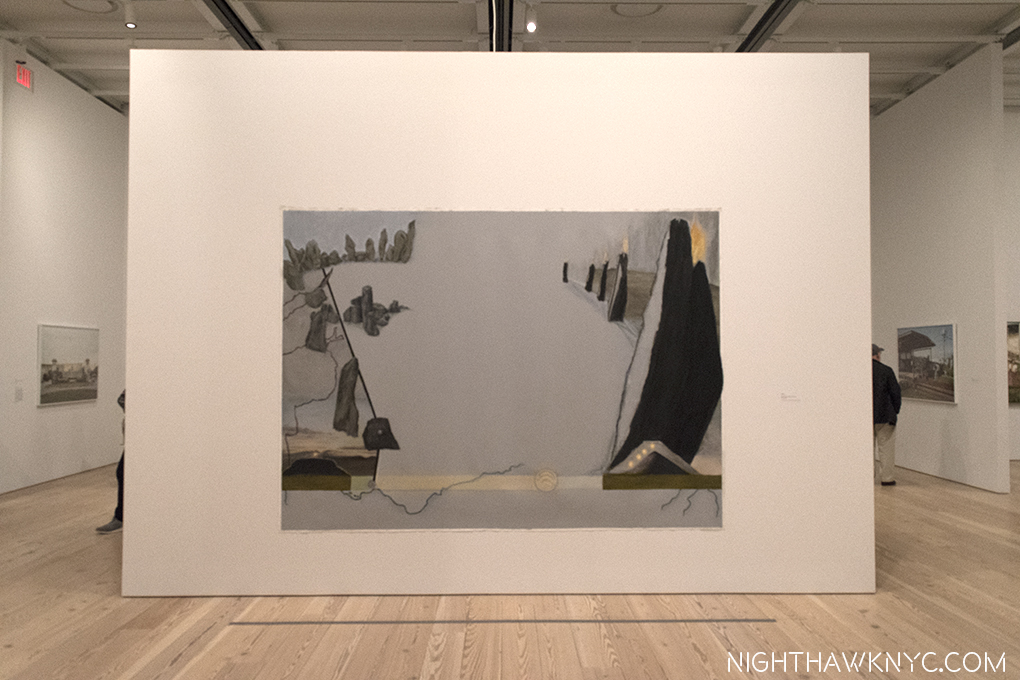This site is Free & Ad-Free! If you find this piece worthwhile, please donate via PayPal to support it & independent Art writing. You can also support it by buying Art & books! Details at the end. Thank you.
Written & Photographed by Kenn Sava (*- unless otherwise credited).
As I continue to explore Contemporary Photography this year, I find I am increasingly drawn to the field of “PhotoJournalism.”
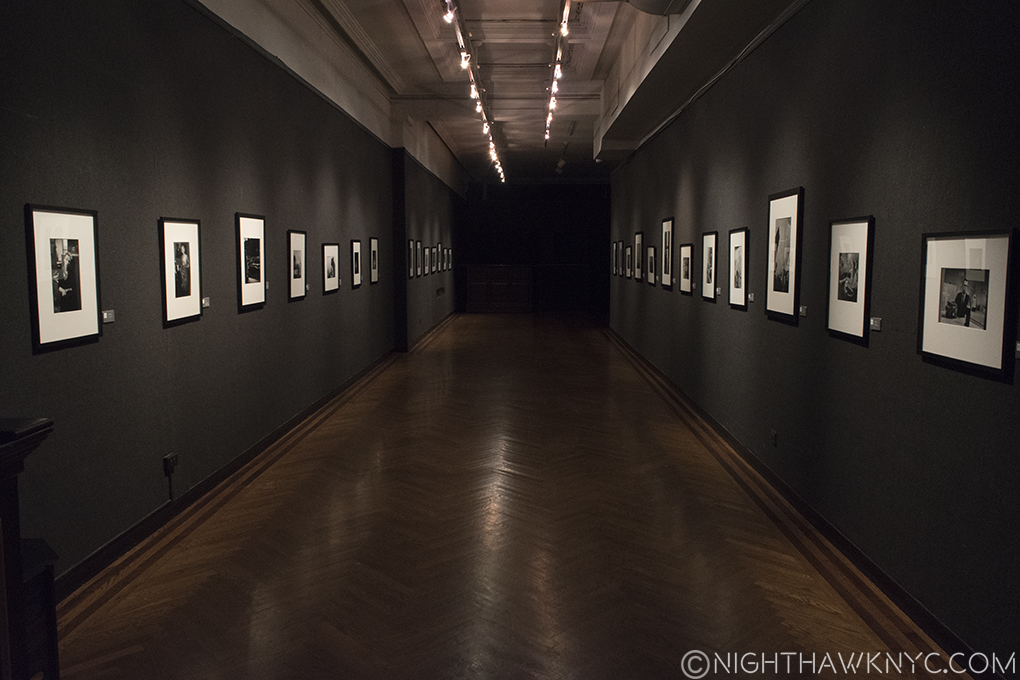
Is this the Early Magnum: On & In New York Show, or the Black Hole of Photography that has swallowed me whole in 2017. Or, both? Click to feel engulfed, like I do.
Or, what was called “PhotoJournalism.” As far as I can discern it was a term meaning using pictures to tell a story, report a story, or support a story. Was? Or is? It’s a term that I struggle to define today, in the dual print & cyber world. As I explore the field, I find that some Photographers have an issue with the term, too, while others still use it. Since I am someone who loathes “boxes” applied to work in any creative field of endeavor, or the creators, themselves, I’m going to use it (with those caveats) only for the sake of clarity, though I prefer to refer to the creators of this work as Photographers. For a number of reasons, I wonder if the term is on the verge of outliving it’s usefulness, though professionals, no doubt, may differ.
At a time when these Photographers are under seemingly ever-increasing threat, on many fronts, showing their work is one of the best means there is of combating that, and helping them because it brings this work more and more into the light and before more eyes. In making the rounds of shows and in doing my research, I’ve been surprised by the amount of Photographs I’ve seen documenting current and recent conflicts and crisis around the world- in gallery shows, at AIPAD, and in PhotoBooks. In most of these instances, they’re seen on their own, with almost no supporting text, save for the ever-popular small info card. This also makes me wonder- Without the “Journalism” (i.e. a text), is it still “PhotoJournalism?”
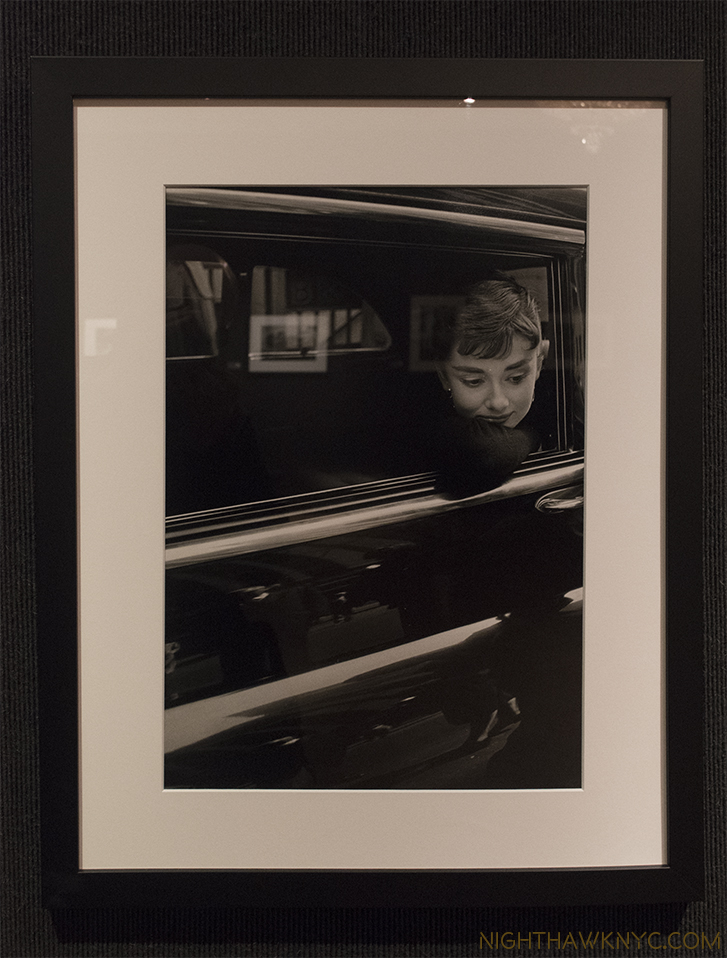
Speaking, without words. Dennis Stock of Magnum Photos, Audrey Hepburn during the filming of “Sabrina,” NYC, 1954. Standing there, it was hard for me not to think that she survived near-fatal starvation in Nazi Holland at the end of WW2, just 9 years before.
With all of that being said, I find I’m being drawn to “PhotoJournalism” for one overriding reason-
I believe these Photographers, especially those who work in what is called “Conflict Photography,” may well be the bravest creative people in the world today. To my mind, that gives them a leg up on being among the most compelling creators of our time. And, especially in these times, their work is critically, and increasingly, important. For all of us.
Robert Capa’s eight surviving photographs of Omaha Beach on D-Day (out of the 106 he’s said he took) were among the first works of what is called “Conflict Photography” to captivate me. Their story is tragic. I mean the story of his film being ruined, and only these precious few, now iconic, images surviving, is tragic. Yet, I’ve come to make peace with that, first, because there’s nothing to be done to change it, and second, because I’ve come to see them as symbolizing the larger experience- that not all of those incredibly brave fighting men who entered that living hell survived, either. They, and the ones that did survive, (though, with typical modesty, say otherwise in interviews), ARE Heroes, of what was the most important day of the 20th Century. That Mr. Capa lost his life almost exactly 10 years to the day after D-Day covering another battle in a far away land speaks to the dedication he had to his craft, and his life’s mission.
It truly was life and death to him. Every single time he stepped on to a battlefield- to do his job, “armed” with only a camera.
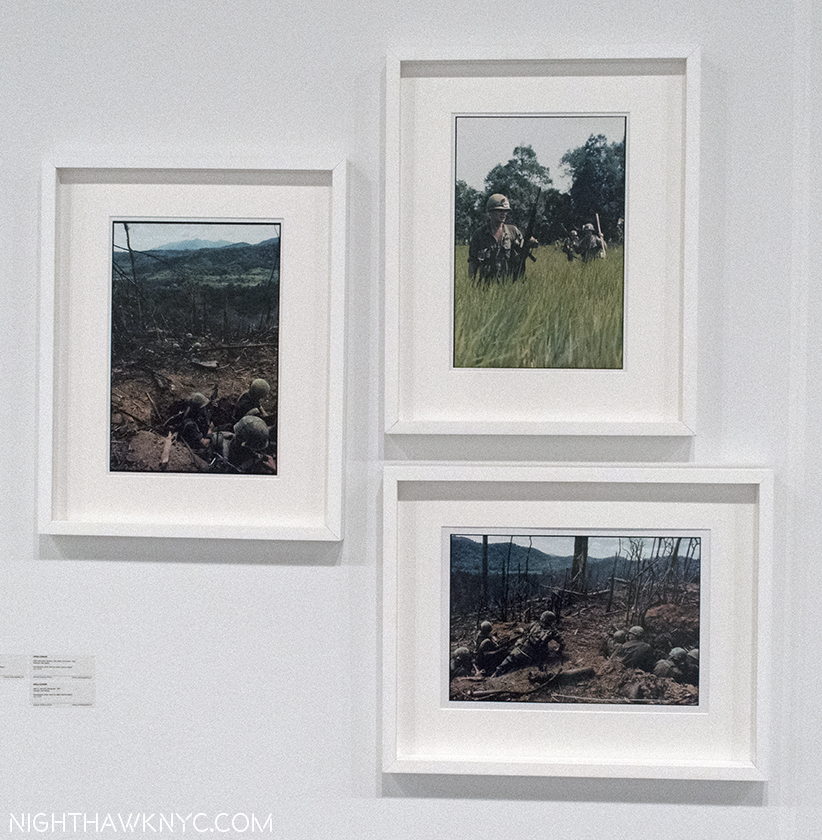
Giles Caron (APIS & Independent), 3 images from his Vietnam War Series, 1967. Mr. Caron was killed there 3 years later. Seen @ School Gallery, Paris, AIPAD Booth
But, before Robert Capa left us, he also left us Magnum Photos, which he was a co-founder of, now the world’s leading Photo Agency. It’s a cooperative, an agency and an archive, owned by it’s Photographer-members. The list of past and present men and women who have been, or are, members is closer to staggering than impressive. Though of course, there are many Photographers who are not Magnum members who are doing/have done great and important work. Being as 2017 marks the 70th Anniversary of Magnum’s founding, I’m going to focus on Magnum Photographers, though begin with two “Independents,” the first, Giles Caron, above, who died in Cambodia at age 30 (I will note “Independent/Other Association” next to their names here).
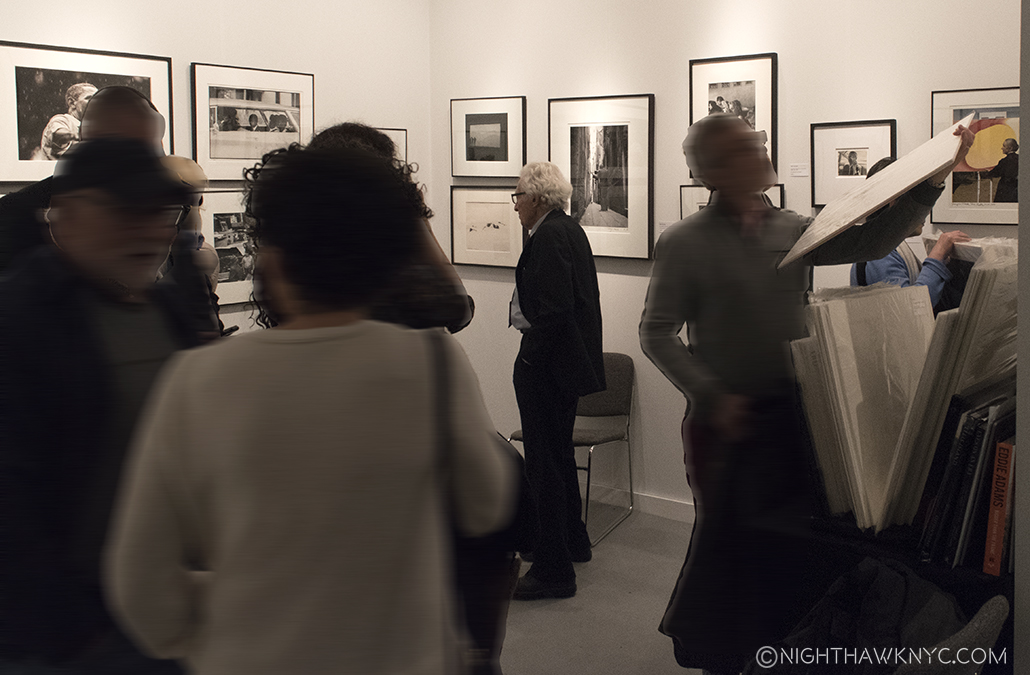
Tony Vaccaro, center rear, seen with a wall of his masterpieces to his right. From the far right corner- Georgia O’Keeffe (2), Picasso, “The Violinist” directly behind his head, Hitler’s Eagles Nest (top, in front of him) and a fallen GI (bottom), at Monroe Gallery’s AIPAD Booth, in March.
I can’t go any further without mentioning, again, having recently been in the presence of the the second, the “Dean” of Photographers, 94 years young Tony Vaccaro, at Morgan Gallery’s booth at AIPAD, because it still feels like I imagined it. Like Mr. Capa, Mr. Vaccaro is today known for many other genres of photographs, especially portraits, besides his classic World War II photos, (which are the subject of a PBS Documentary), examples of all lined the wall behind him that day. Looking at these, like looking at Robert Capa’s “other” work (after putting down “Robert Capa: This is War!”), is fascinating because it provides insights into the man and, once in a while, his life. Sometimes it’s hard to remember these Photographers, who shoot War and Conflicts, are real people, with real lives.
Flesh and blood human beings.
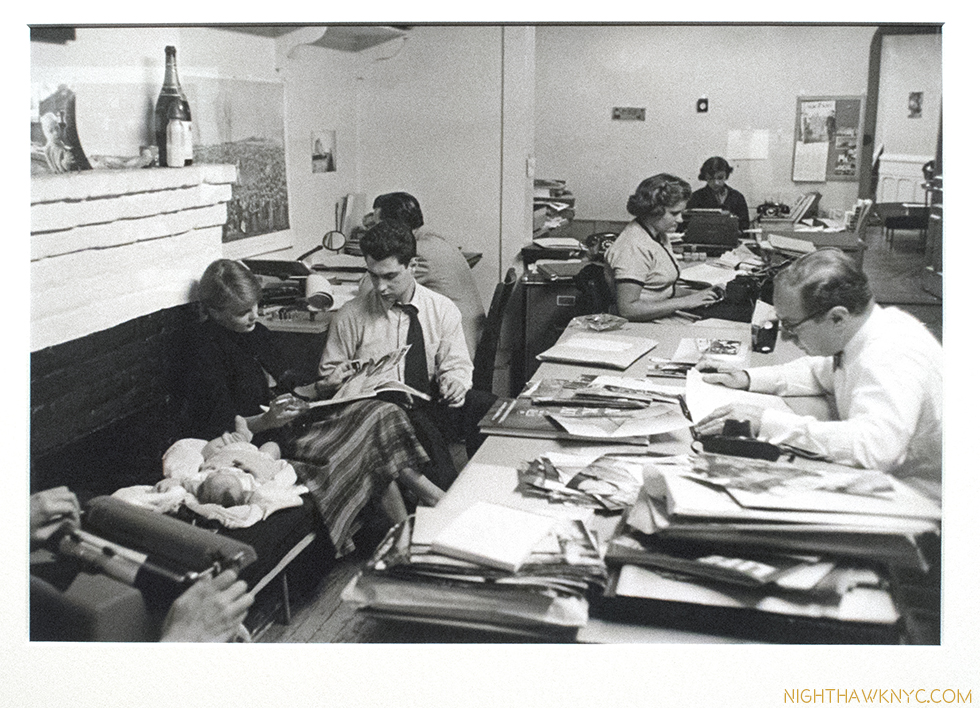
Smile! Werner Bischof’s Magnum Photos Office, 1953. See that Magnum bottle of champagne on the left? That’s the inspiration for the name “Magnum.”
The recently ended show, “Early Magnum: On & In New York,” produced by Magnum Photos at the National Arts Club focuses on this “other” side, as we get to see Photos of NYC by Elliott Erwitt, Bruce Davidson, Cornell Capa, Erich Hartmann, Dennis Stock, Eve Arnold, Werner Bischof and others, along with candid early shots of the Magnum Offices in action.
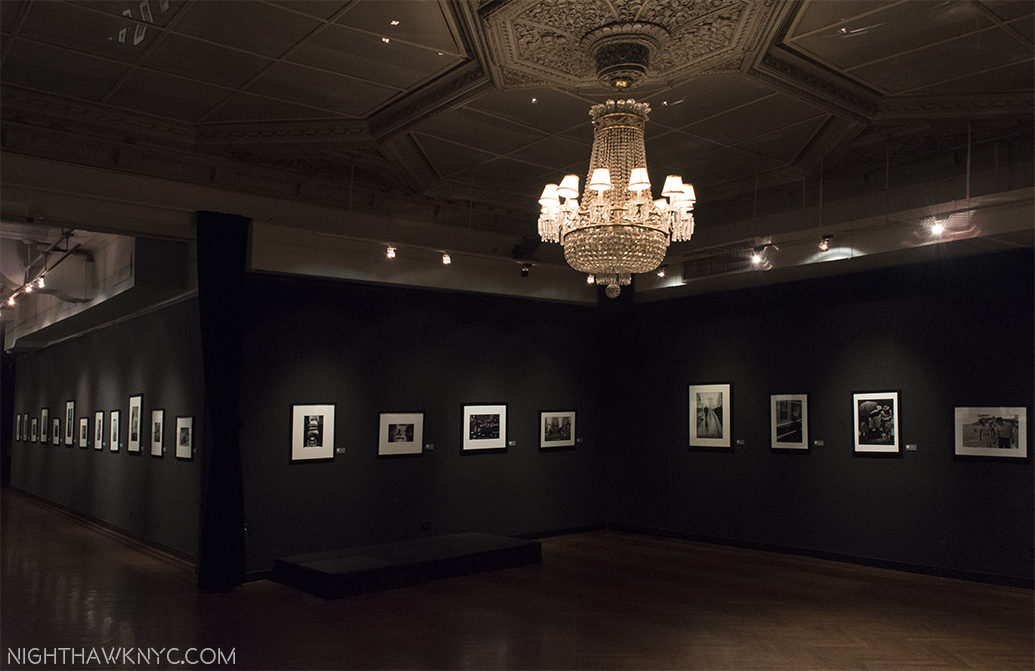
(Another) Installation View of Early Magnum: On & In New York in the Grand Gallery of the National Arts Club, on Gramercy Park.
A good many of these are famous. As a group, they show the contribution Magnum has made to our culture in preserving memories and time, as well as to the Art of Photography by having so many terrifically gifted, and amazingly versatile Photographers as members. Their work is eternally of it’s time, timely for us now, and a good deal of it is still ahead of our time. There are pleasures, familiar and unexpected, throughout this well conceived and arranged selection, and it does a fine job of celebrating this part of Magnum’s achievement.
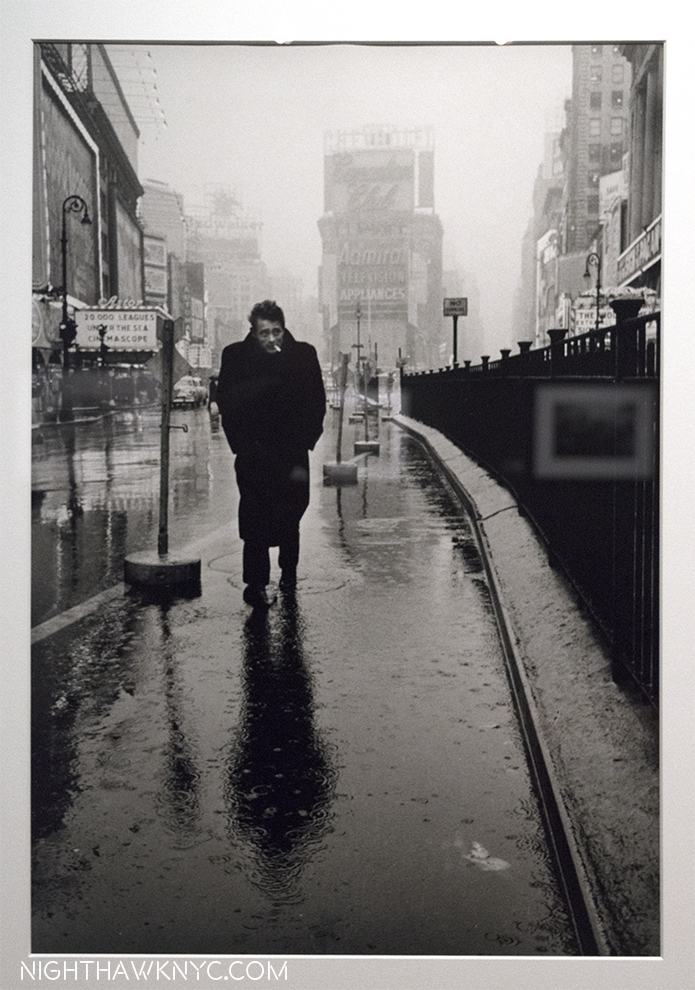
Dennis Stock’s haunting portrait of James Dean on Broadway in Times Square, in 1955, a block from Lee Strasberg’s Actors Studio, taken just months before his death that September.
While it was utterly fascinating looking at well-known images like this, or Sammy Davis in his hotel in 1959,
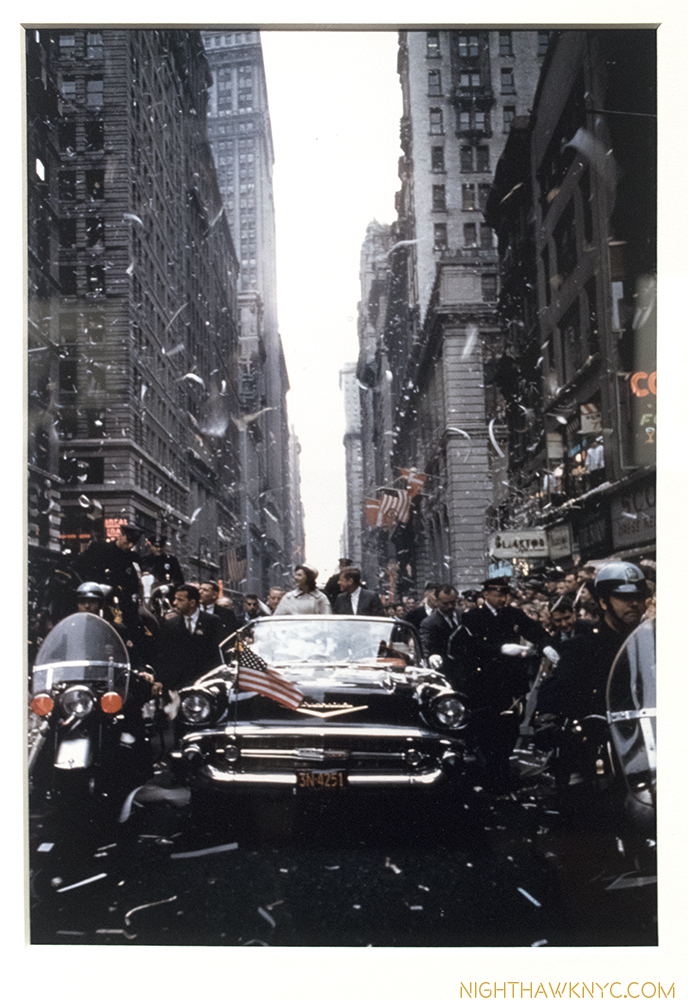
Cornell Capa (Robert’s brother), JFK in NYC, 1960, a month before the election.
or JFK campaigning in an open vehicle (poignant now, on it’s own) in an NYC Motorcade a month before the 1960 election by Robert Capa’s brother, Cornell Capa, it was images of people mostly forgotten to history that held me longest, like a group of shots from Bruce Davidson’s Brooklyn Gang, in 1959, which captures the lives of a Brooklyn gang so brilliantly that the images still look ahead of their time to me, like the second one below.
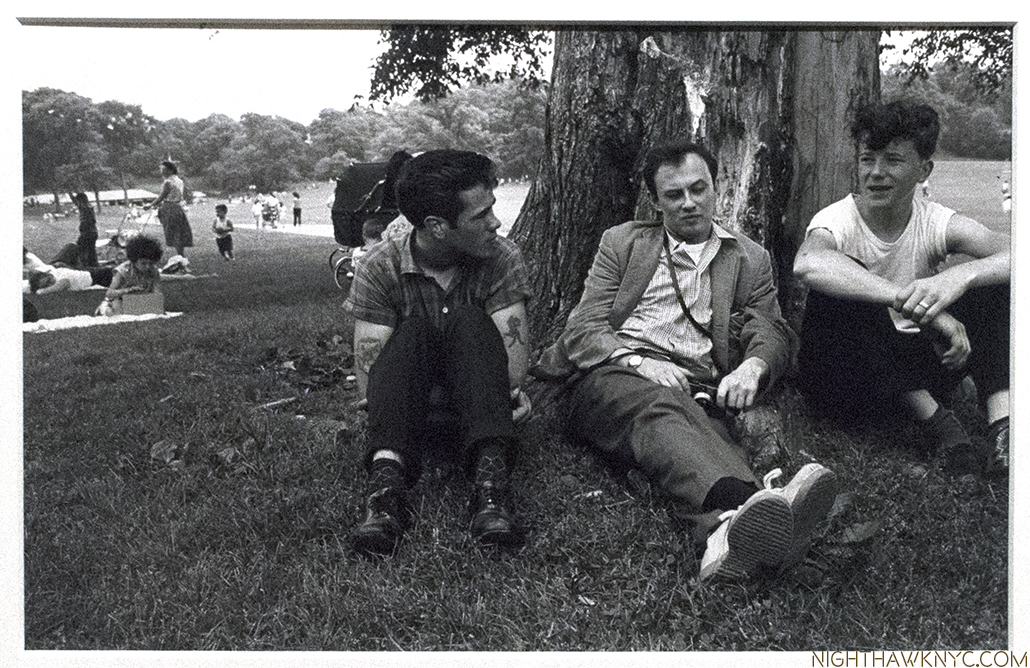
Styling. Bruce Davidson, center in 1959, with 2 members of the Brooklyn Gang.
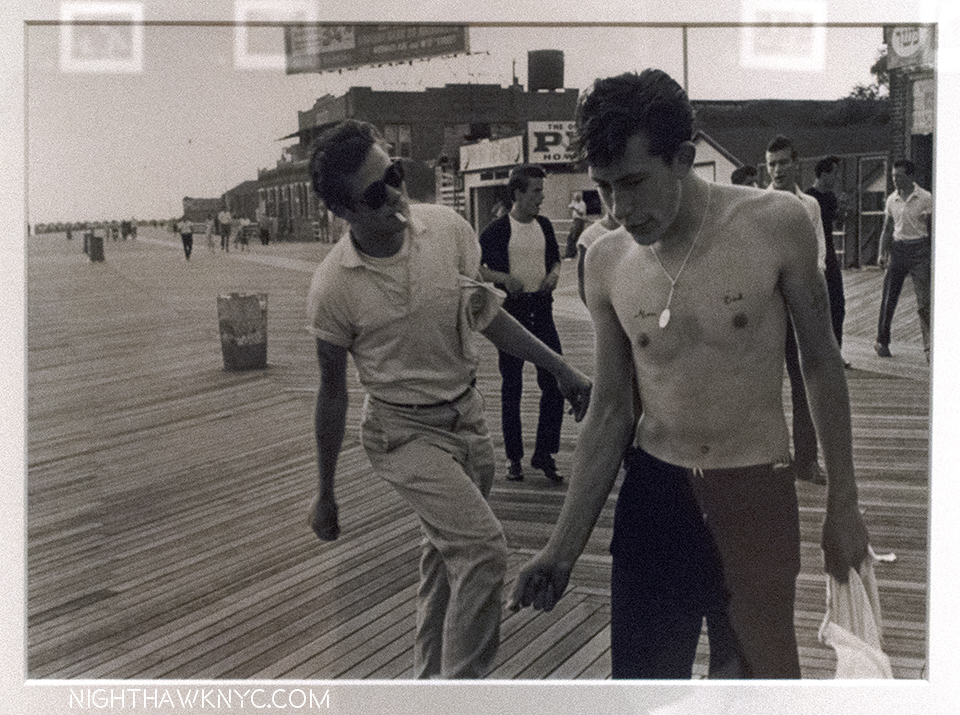
Bruce Davidson, Brooklyn Gang on the Boardwalk in Coney Island, 1959, the gent on the right is also on the right in the previous shot.
I previously mentioned asking Mr. Davidson, who I revere as the living Master of NYC Photography, how he was able to survive shooting “Subway” in the dark days of 1980. He said “Because I looked like a photographer.” Looking at these “Brooklyn Gang” classics, taken in yet another environment not welcoming of outsiders, I again marveled he survived. I mean, just look at how he’s dressed! Part of the answer, and his disavowal of the term “PhotoJournalism” for his work, can be found here-
While all of this shows that “other” side I spoke of earlier very well, meanwhile, on the “Conflict Photography” front, I wondered many other things looking through another PhotoBook, a new one, about conflict, revolution, it’s effects and aftermaths. It’s “Discordia” by Moises Saman, a Spanish-American PhotoJournalist who’s been a full member of Magnum Photos since 2014, and consists of Photographs he took over four years of the “Arab Spring,” from 2011 to 2014, edited, and with collages, by Daria Birang.
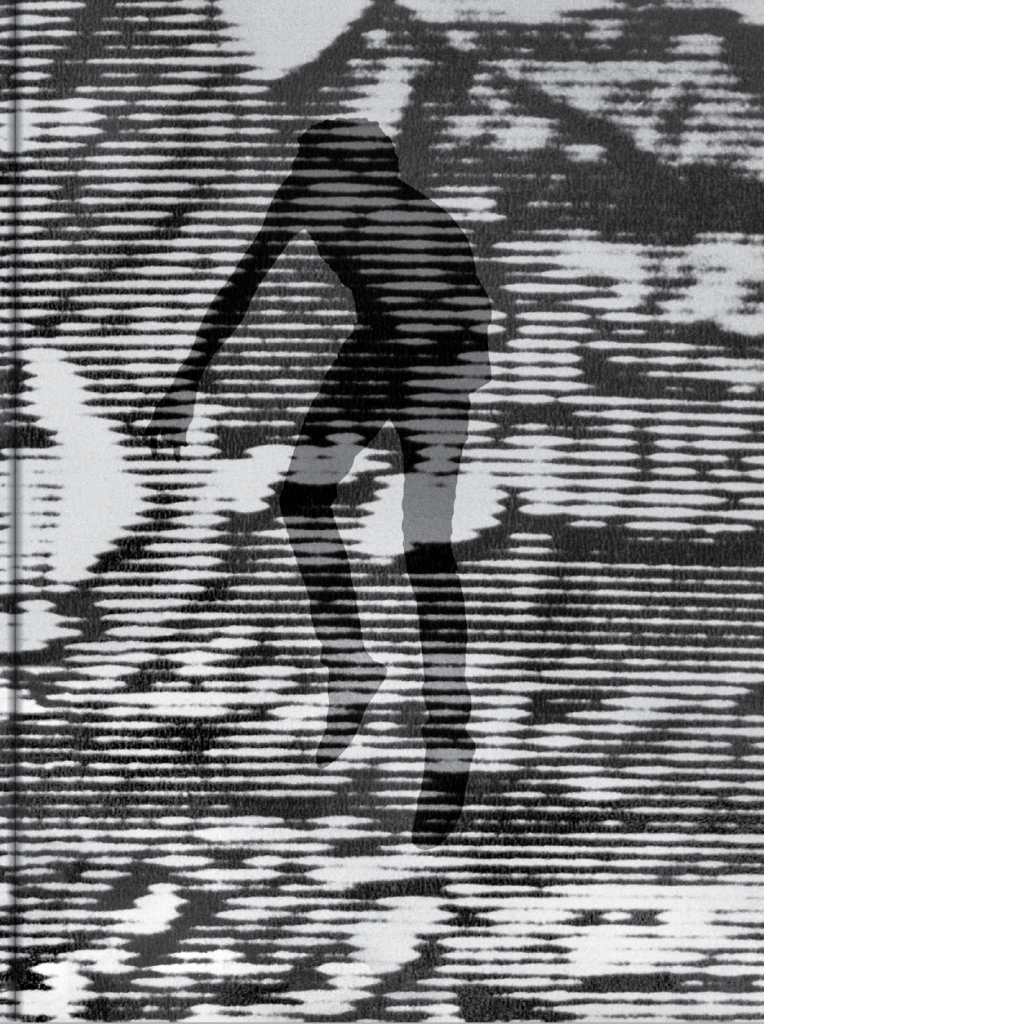
Moises Saman, Discordia, 2016, Cover
It’s cover shows a silhouetted figure who’s, possibly, just thrown something?, or has just been hit by something? Either way, he seems to be off his feet, as if picked up out of the world and transported somewhere else, and lost in the world he’s collaged in over part of a static-covered TV Screen. It’s not an image you’d see in the “real world,” and it’s not an image you’d see on TV. Right off, “Discordia,” the name of the Roman goddess of strife, seems to be announcing it is walking the line between document and Art. After my first pursuing of this self-published book, I asked myself…
How does someone become Moises Saman? Who, in addition to being a Magnum member, is a world-renowned Photographer, who’s work appears regularly in the New York Times, Time, National Geographic, among other places, and is a winner of a 2016 “Picture of the Year” Award. (“Discordia,” won the 2016 Anamorphosis Prize.) Do you just get on a plane with a camera, go somewhere where there’s a battle or revolution taking place and start taking photos? And, being someone who almost broke both of his knees a few weeks ago photographing on the High Line (I’ll wait for the laughter to subside…)…How do you learn to survive?”
And, if you do?- “What drives you to keep going back?”
All of these questions come to mind before the key question at the heart of the matter of this book- How do you get such amazing photos in the midst of utter chaos, bloodshed, even death going on all around you?
When I saw this one, of nothing less than a bomb maker actually making a bomb in Syria, I was struck by a thought-
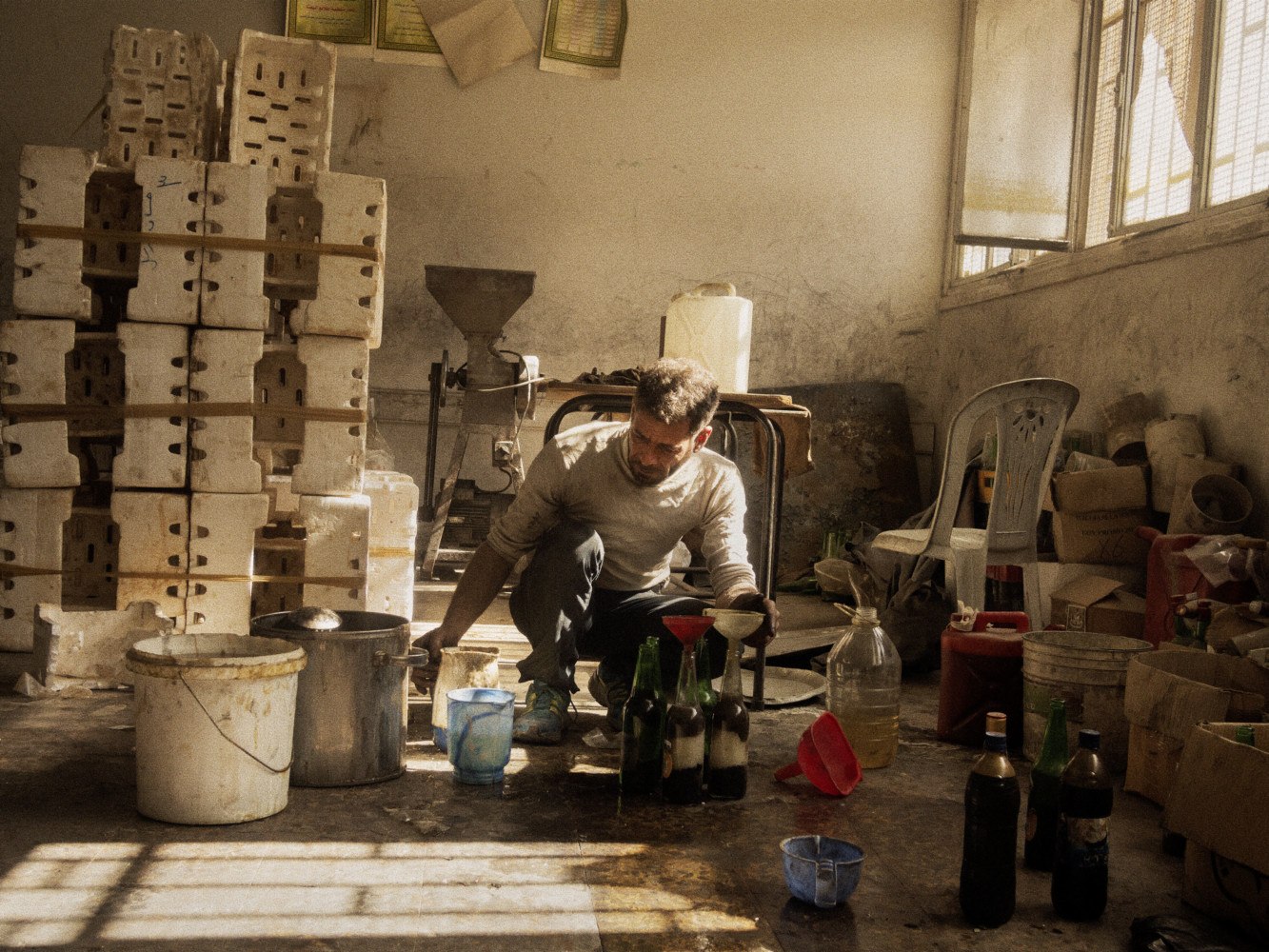
Moises Saman, Magnum Photos “A bombmaker working for the rebels mixes chemicals in a makeshift bomb factory in a rebel-held district, Aleppo, Syria, 2013.” Quotes denote Magnum Photos caption.
“Who sees this?”
Yes, it raises questions that are beyond the scope of this site. So, I am not going to get into any of the “bigger” questions regarding the individuals photographed here. Hopefully, each viewer assesses the work for themselves and, after all, in a free society, that’s one of the key freedoms we have- to be able to do so. Another is the right to see such images. And that’s why whatever you call them- “PhotoJournalists,” “Conflict Photographers,” or “Documentary Photographers” (which Mr. Saman refers to himself as), who’s jobs, and very existence, seems to get harder with every passing day, are so important to all of us. It will be up to the future to decide if it, like every thing else being created today, is “Art,” or not. For now, work that speaks (at least to me), and has importance, in my life, and the world, makes it “important” now. For myself, looking at this shot- the angle Mr. Saman chose, that light actually enters this room, and shines on the floor, the bomb maker himself- what he’s wearing and how he looks, what else is in the room. It’s familiar. It’s foreign. It’s everyday- (you want to think- “Ok. He’s preparing to paint the walls.”)..and it’s…not. It’s unimaginable. It’s impossible. And then? It’s unforgettable.
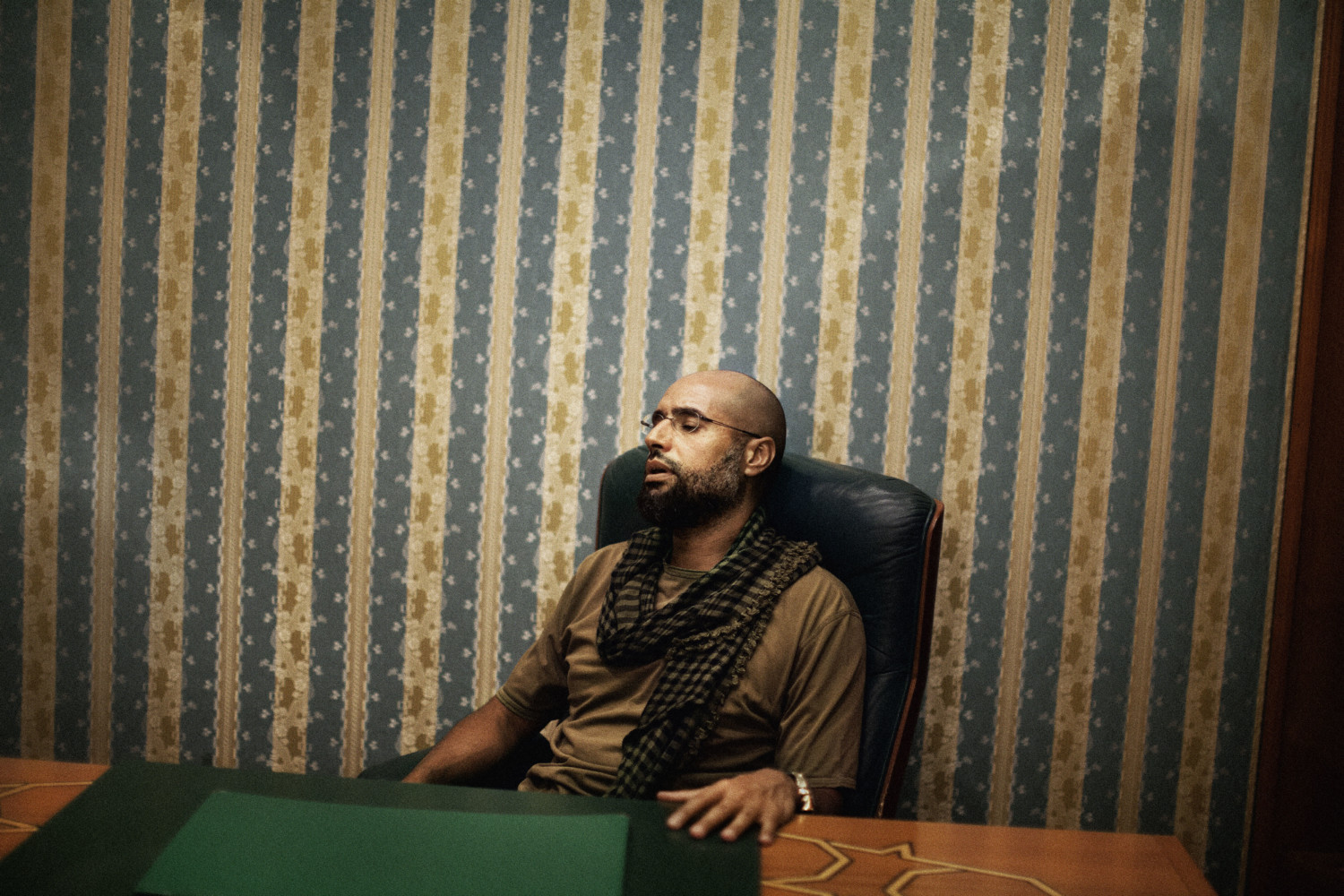
Or this? Moises Saman, Magnum Photos, “Seif al-Islam Qaddafi, son of Colonel Muammar Qaddafi photographed shortly before the fall of Tripoli, Libya, 2011.” Quotes denote Magnum Photos caption.
In looking through “Discordia,” the emphasis often seems so be on the posture and/or expressions of those depicted, which can be seen even on the cover. This brings a powerful human element to everts that often takes place in rubble, or completely or partially destroyed structures. We see leaders feeling the weight of their dilemma, fighters seen in the act, and, their families in the throes of dealing with their deaths, after. We see business people trying to maintain some semblance of “normal life,” traveling to and fro, one climbing over a wall with his pretzels to sell on his back, another navigating ever changing roads.
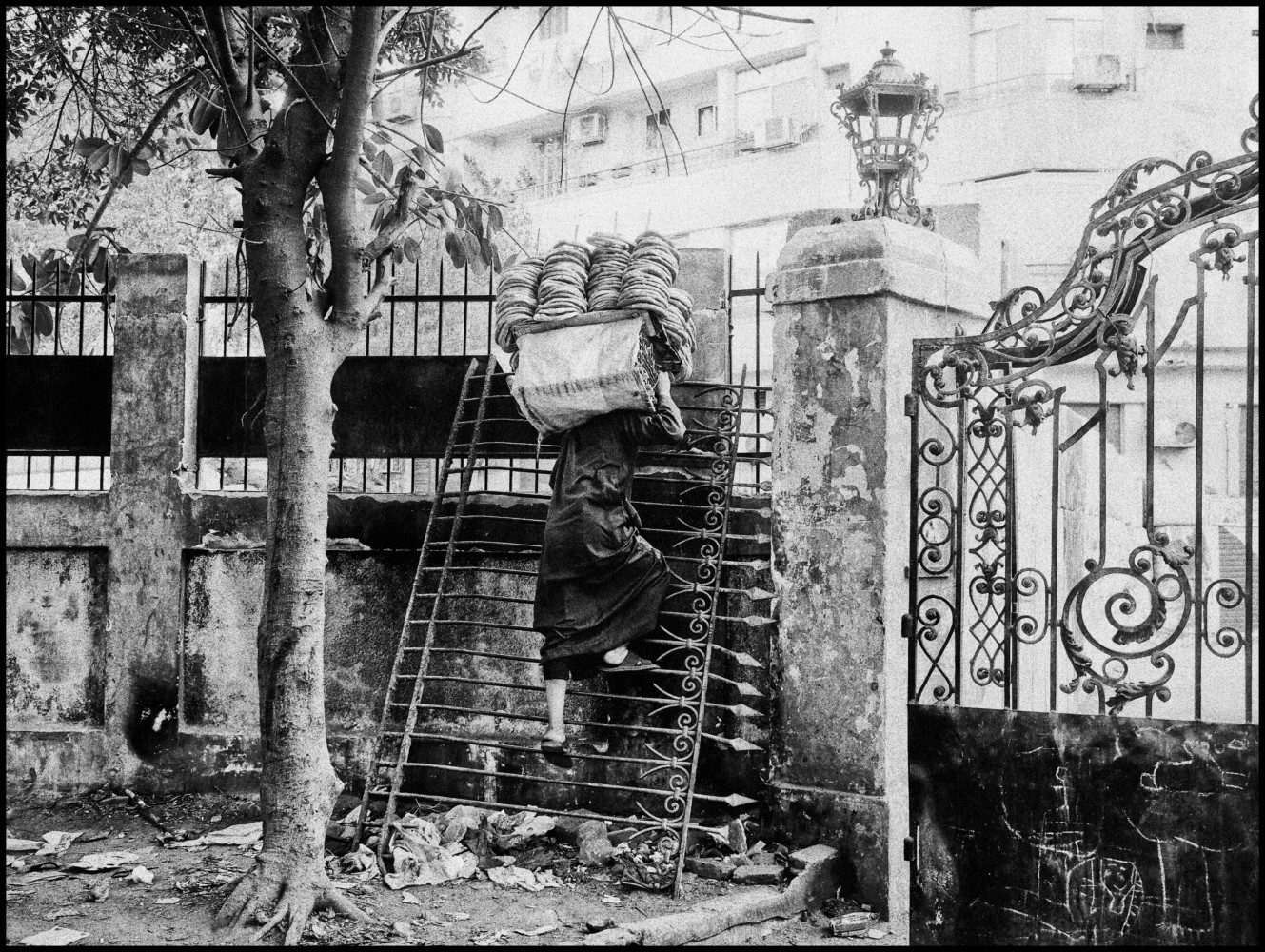
You think your commute is hard? Moises Saman, Magnum Photos, “Pretzel seller near Tahrir Square, Cairo, Egypt, January, 2013.” Quotes denote Magnum Photos caption.
These serve to remind that conflicts affect everyone in these towns, cities, or countries. Though “Discordia” documents 4 years of work, capturing the “Arab Spring” as it spread through the Middle East, there are no chapters separating one part of it from another. The effect is to show the basic nature of these revolts- their commonality. The struggle against and the resulting push back, before, during and after, and, most of all, the effect on lives. For those of us far far away from these lands we see the face of struggle, of revolution being born and fighting for life against the powers that be that want to remain being the powers that be. From afar, it seems as “alien” as the cover image. Mr. Saman appears to show us both sides, and while the names, places and background info he provides in the back of the book shed light on the photos, they’re still incredibly powerful without knowing any of this- just as pictures of people in a revolution, human beings in unimaginable circumstances, and in the process, presenting them this way “separates” the images from “traditional” PhotoJournalism,” especially since the only words to be found in the book are in a section in the back. At least for me, this is a book about human beings, and their underlying humanity- the pain and suffering, and the struggle to overcome injustice, and the inevitable results of their actions, or the actions of others, in the midst of unbelievable situations and environments, that looks like another world.

Moises Saman, Magnum Photos, “Young protesters take shelter during clashes near Tahrir Square. Cairo, Egypt, January, 2013.” Quotes denote Magnum Photos caption.
Right from the silhouette on the cover, I was taken by the postures and expressions of those in the Photographs, which becomes a running theme in them, and, for me, their essence. Julian Stallabras, author of a book on Contemporary Art, Art, Incorporated, that I highly recommend, said, “Discordia shows the hopes, idealism and strength of rebellion against long-established dictatorial regimes, and also- with great clarity- the price paid for it.” Indeed. But what’s left (largely) unsaid, and not shown, is the price Mr. Saman paid. Only at the end of the plates, in a small section of text do we learn that the helicopter crash in 2014 that he shows us the aftermath of (below) was one that he, himself, survived! He makes no mention of whether he was injured, or not, and only shows us the reactions of others, that injured, or not, he kept on capturing!

Mosies Saman, Magnum Photos, “A boy whose mother was onboard the helicopter cries as he does not know the fate of his mother. (She survived.) An Iraqi Air Force helicopter on a rescue mission in the Sinjar Mountains crashed shortly after takeoff. Onboard the helicopter were dozens of Yazidi refugees stranded in the mountain for days unable to reach the safety of Kurdish-controlled areas of northern Iraq. Sinjar Mountains, Iraq, 2014.” Quotes denote Magnum Photos caption.
If that doesn’t tell you all you need to know about his commitment, nothing does.
Meanwhile, I also hear an undercurrent of talk about this work being “difficult” to look at, let alone buy or hang in homes. Is it because it’s a Photograph and not a Drawing or Painting? When I hear this, I’m reminded that many found Jackson Pollock’s work “ugly,” and while a good many, no doubt, still do, many more now accept it. With the number of excellent shows and PhotoBooks around, this may be changing for these Photos, too. Slowly. Renowned Photographer turned Photo collector, Harriett Logan, recently spoke to Magnum about building a collection of these works, which she started (I think astutely) only four years ago. It includes work by Robert Capa, Dorothea Lange and Matt Black, among others. She, through the Incite Project, supported the publication of “Discordia,” in return for prints by Mr. Saman. She said, “Like the tank man in Tiananmen Square, history stops at those still images, and the photographers that took those pictures did an incredible job of essentially isolating, for all of us, those moments of history.” Those isolated moments adds up. Ashley Gilbertson’s (of VII Photo Agency) “Refugees Disembark on Lesvos, Greece” at Monroe Gallery at AIPAD, provided “another chapter” to the story Ai Weiwei so movingly told in his show, Laundromat, about the Refugee Camps, which I wrote about recently. And there are others.
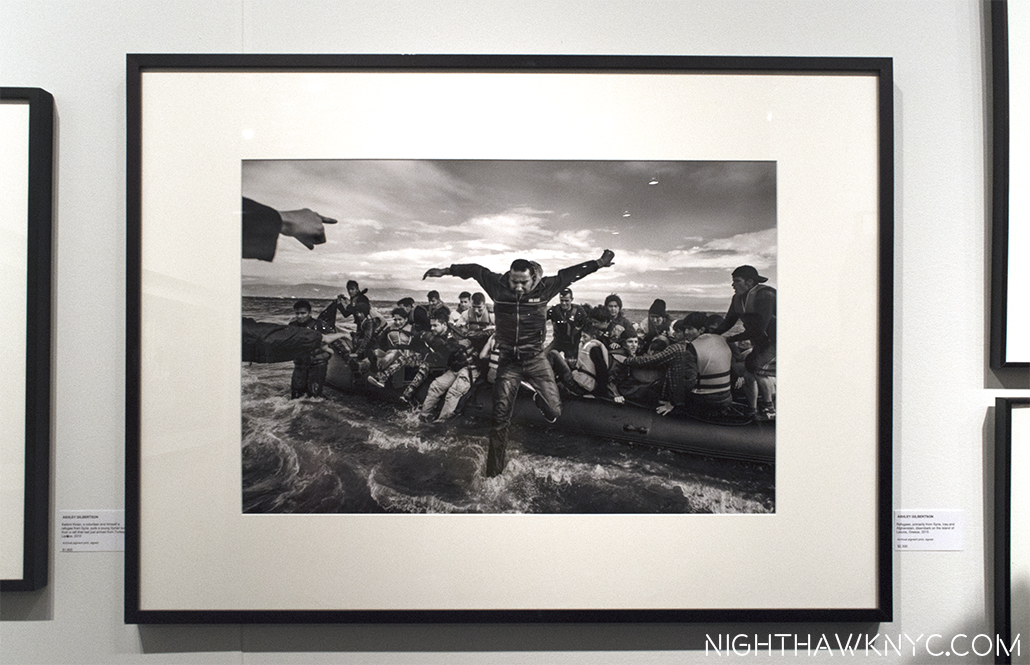
Ashley Gilbertson’s Refugees Disembark on Lesvos, Greece, 2015, at Monroe Gallery, AIPAD.
The always excellent Jack Shainman Gallery recently had a compelling show of Richard Mosse, and Sebastiao Salgado, (both former Magnum members), perhaps the best known “Concerned Photographer” alive, just had a show of his extraordinary Photographs of the 1991 Kuwaiti Oil Fires at the Tagore Gallery,
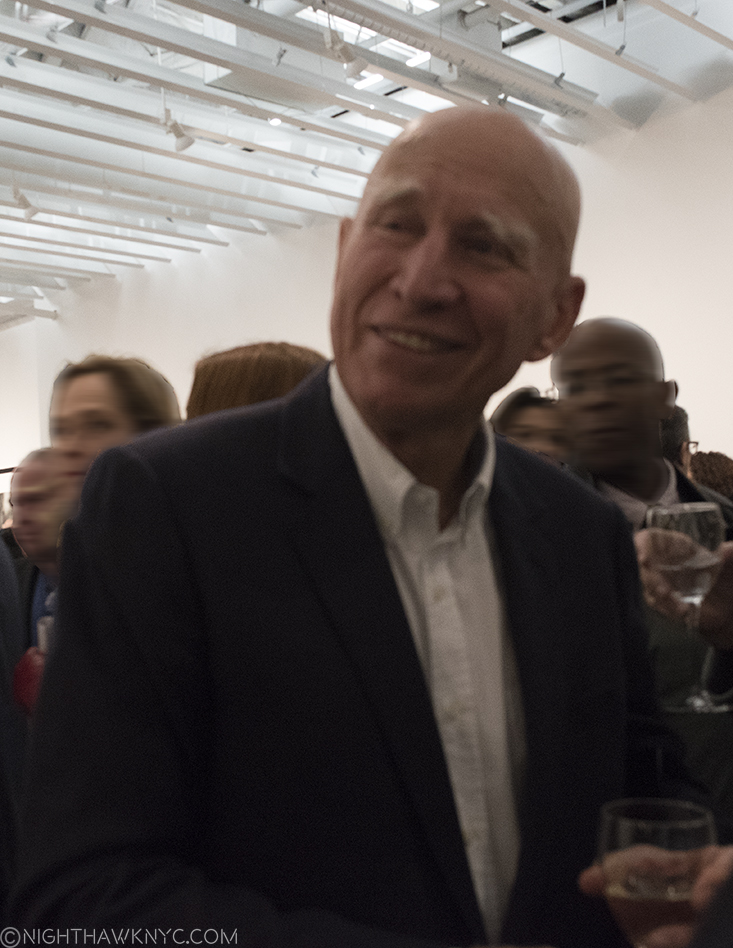
The legendary Sebastiao Salgado at the opening for his Kuwait 1991 show at Tagore Gallery Show, March 30, 2017.
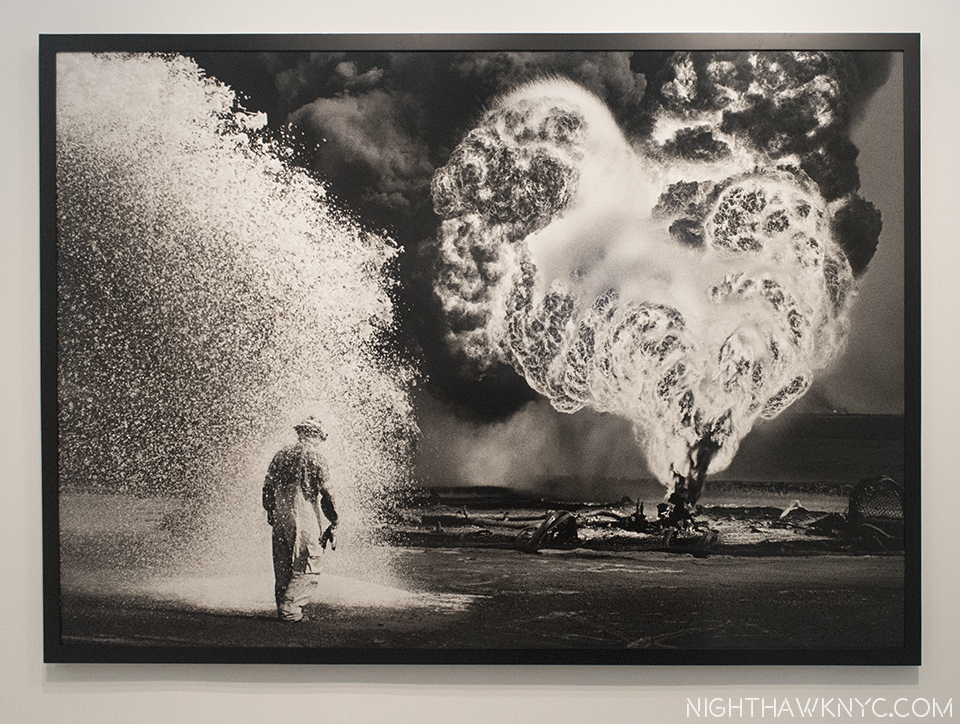
Sebastiao Salgado, Kuwait, 1991, at Tagore Gallery.
and, the Howard Greenberg Gallery had a show of the work of Magnum’s Alex Majoli, who’s chiarascuro lighting has the power of a modern Caravaggio, with all the drama and theater of Grand Opera, without music or words, which included this-
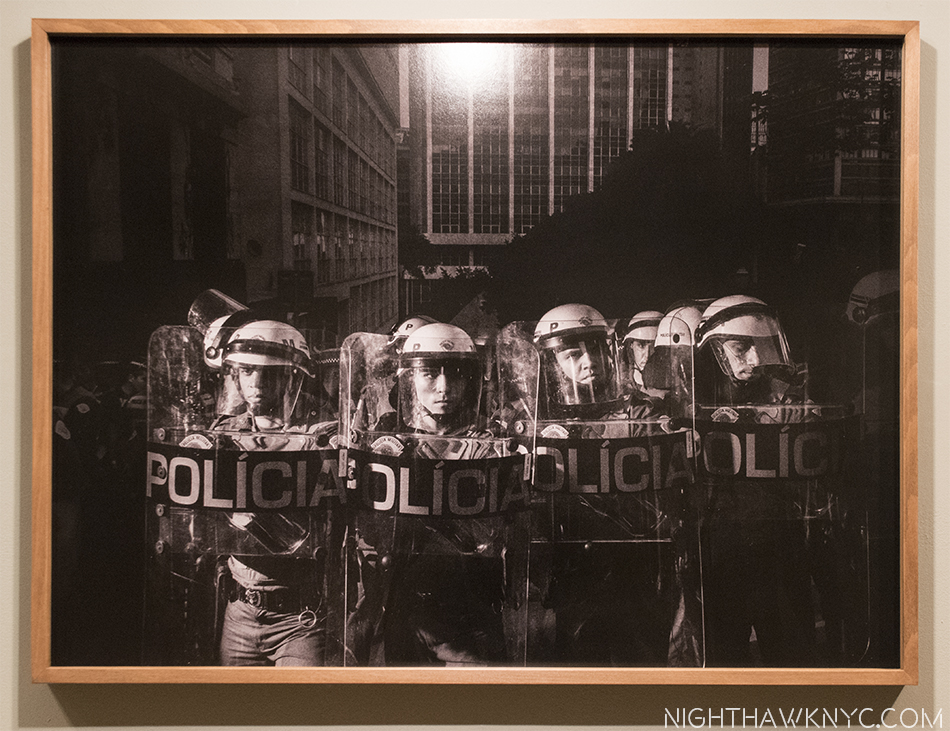
Alex Majoli, of Magnum Photos, faced these Sao Paolo, Brazilian, Police in 2014, with just his camera, and took this Photograph. Seen at Howard Greenberg.
This past week, at the beautiful new show by the Artist Robert Longo, the Contemporary Master of Charcoal Drawing, I had a deja vu moment-
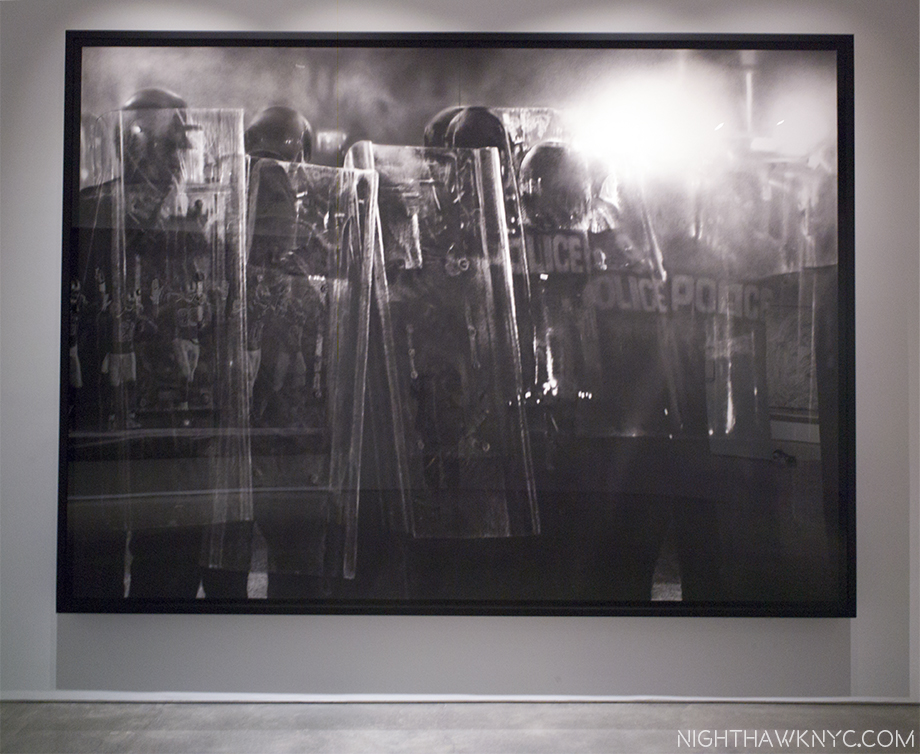
The Artist Robert Longo DREW this work, Untitled (Riot Cops), 2016, possibly inspired by a Photograph, in the safety of his studio, brought back memories of Mr. Majoli’s, above.
Or, two-
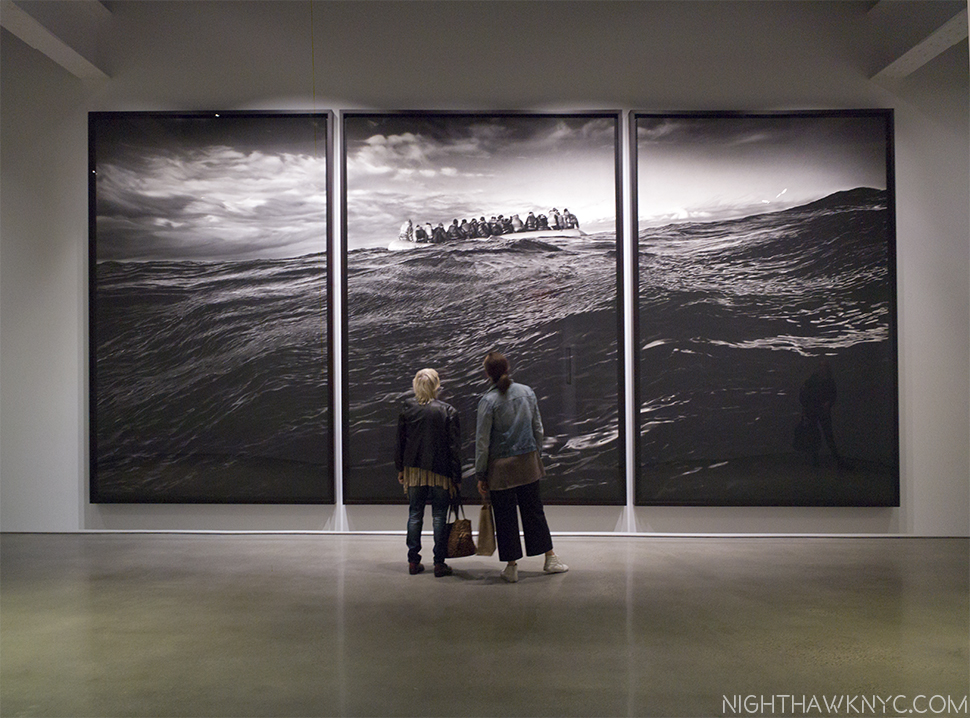
Robert Longo Untitled (Raft at Sea), 2016-17, (both works at Metro Pictures), totals 24 FEET wide. These are Drawings!
His show, “The Destroyer Cycle,” at Metro Pictures as I write this, consists of 12 powerful, typically brilliantly executed, black and white charcoal drawings. The press release states- “For each exhibited work, Longo has developed a technique that reflects the medium of the drawing’s source image.” Specifically about the one above, it says it is- “A composite image partially sourced from the cover of a Doctors Without Borders publication, the drawing depicts refugees on a raft amidst the vast, turbulent Mediterranean Sea.” Curious to learn more, I reached out to Doctors Without Borders/Médecins Sans Frontières (MSF, as they are known), who kindly provided me with what may be one of those “images partially sourced?” In any event, it’s an amazing photo in it’s own right, taken by Will Rose (of Rose & Sjolander)-
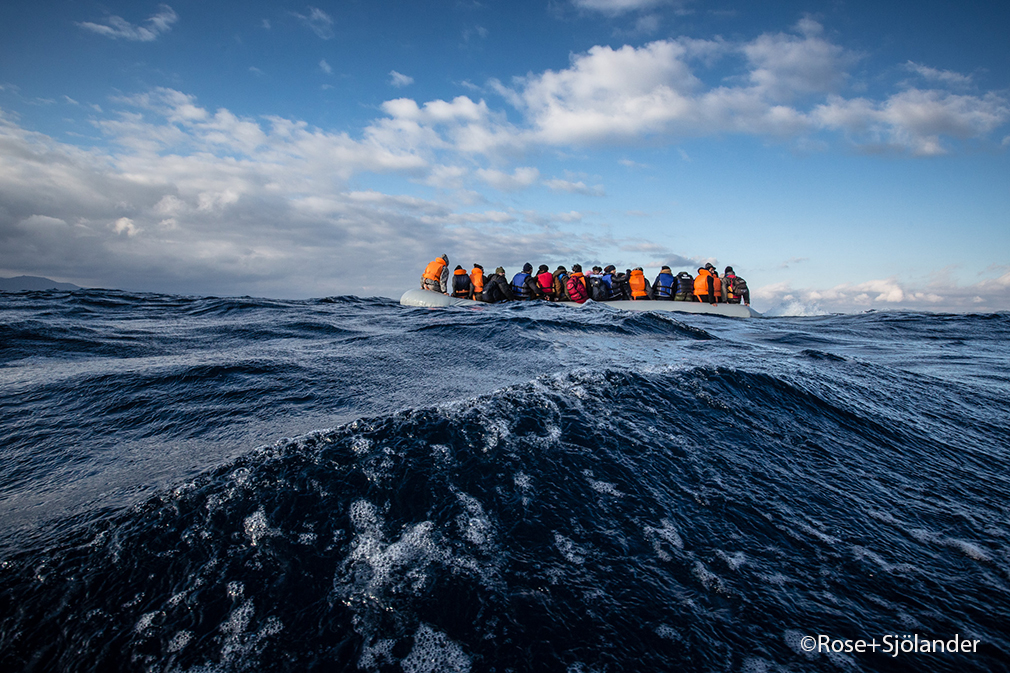
Will Rose, of Rose + Sjolander, December 18, 2015
MSF provided this information about it-
“A Medecins Sans Frontiers (MSF) and Greenpeace rescue team responded to a sinking rigid inflatable boat carrying 45 Afghan refugees crossing from Turkey to the north shore of Lesvos, Greece. On arrival to the scene, the poor quality inflatable was taking on water. The people on board were having problems with the outboard motor as it was poorly fitted and could not be restarted. It was soon obvious to the Greenpeace/MSF crew that the sponsons were rapidly losing air and the lives of the people were in immediate danger…The women and children were grabbed first and transferred into two Greenpeace/MSF boats that were flanking both sides of the sinking boat. All people were successfully rescued and transferred to MolyvosHarbour in Greece, where response teams were on standby.”
Snapping a camera’s shutter freezes a moment in time for all time. Part of what remains from December 18, 2015, beyond the memories of those who lived it, is Mr. Rose’s Photo, and the ongoing effect, and possibly inspiration, it has on all who see it. With shutters being snapped billions of times each day, it becomes easy to be overwhelmed by the number of images before us. Billions of people also draw, but very few of those wind up speaking to people over hundreds of years. Time will judge the lasting import, if any, of everything created today. That it has importance to us living now is undeniable, and what matters most, it seems to me.
Robert Longo’s amazing drawings are, rightly, in many of the world’s great Museums, including MoMA, the Guggenheim, and Whitney Museums. Alex Majoli or Moises Saman are not in any of them (as far as I know.)
Why not?
The movements of NYC Museum Acquisition staffs remains a mystery to me, so I can’t answer that. I do feel that they will be there one day. In the meantime, their work needs to be seen by us, the people they risk their lives for to show us what they see. We miss it at our own peril.
While “PhotoJournalism” strikes me as a term in flux, Magnum co-founder, and legendary Photographer, Henri Cartier-Bresson said, “Magnum is a community of thought, a shared human quality, a curiosity about what is going on in the world, a respect for what is going on and a desire to transcribe it visually.” That might be the “other” definition I was looking for.
“Before you board that plane
I owe you a bottle of cold champagne
Yeah, cold champagne
I don’t know if we have coffee cups
Or plastic cups, I think Sonny has the cups-
Tonite we’re drinking straight from the bottle.”*
Happy 70th, Magnum Photos!
*- Soundtrack for this Post is “Champagne,” by Lin-Manuel Miranda from “In The Heights,” 2008. Publisher not known to me.
NighthawkNYC.com has been entirely self-funded & ad-free for over 8 years, during which 300 full length pieces have been published! If you’ve found it worthwhile, PLEASE donate to allow me to continue below. Thank you, Kenn.
You can also support it by buying Art, Art & Photography books, and Music from my collection! Art & Books may be found here. Music here and here.
Written & photographed by Kenn Sava for nighthawknyc.com unless otherwise credited. To send comments, thoughts, feedback or propositions click here. Click the white box on the upper right for the archives or to search them. Subscribe to be notified of new Posts below. Your information will be used for no other purpose.
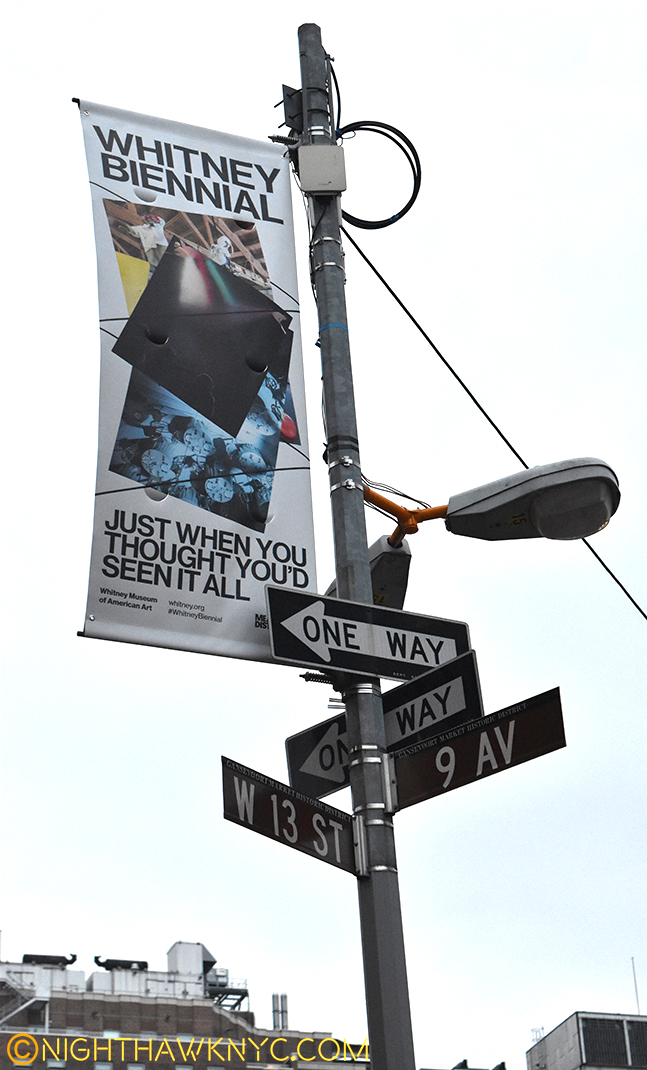
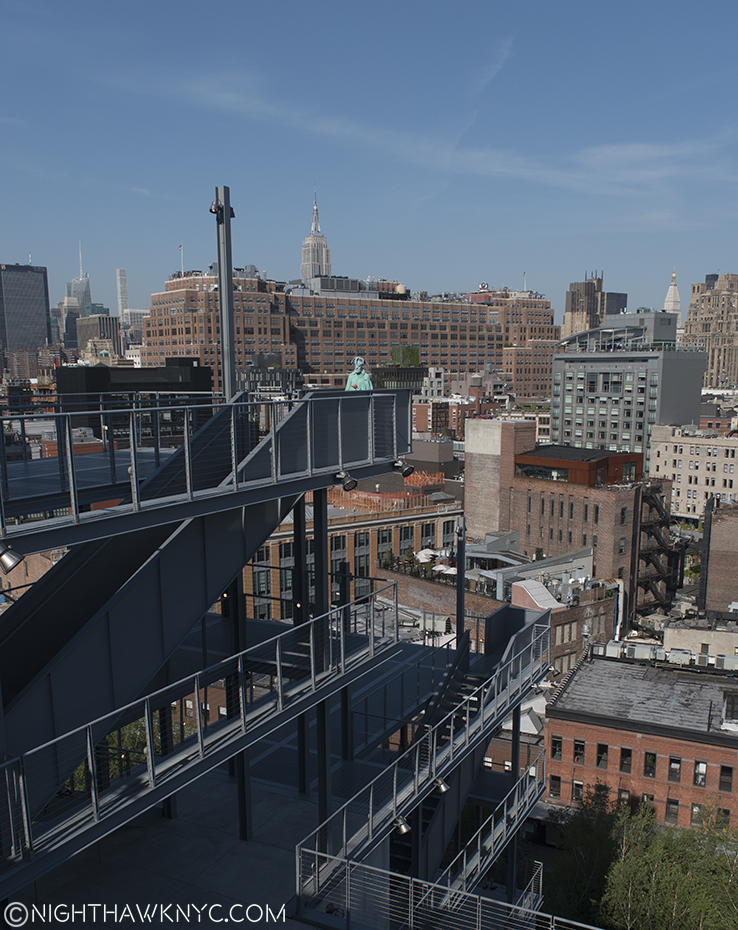
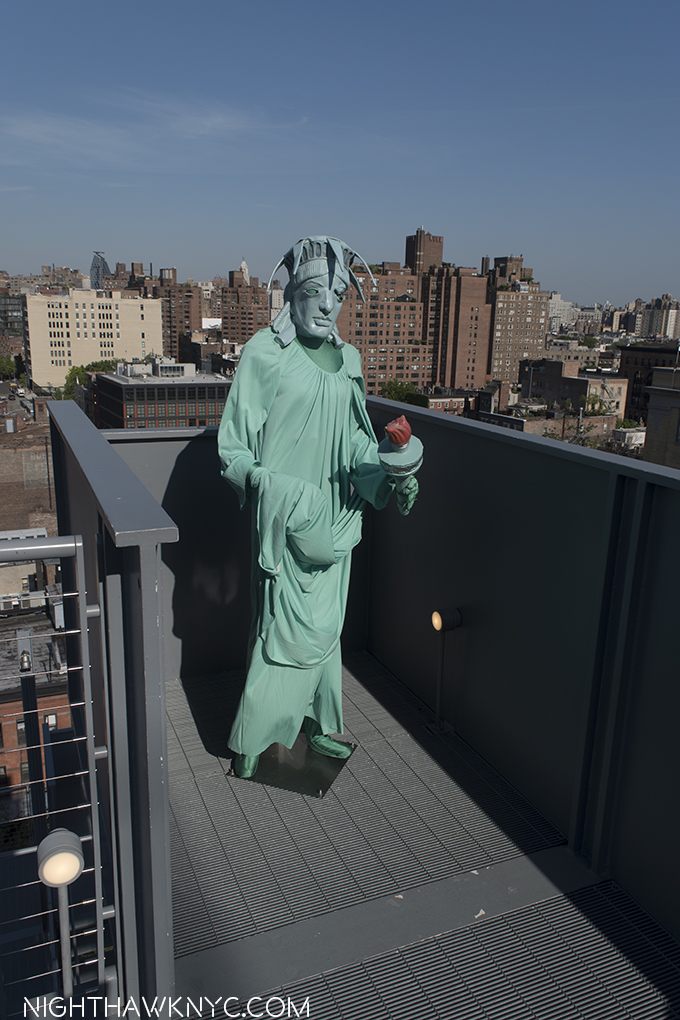
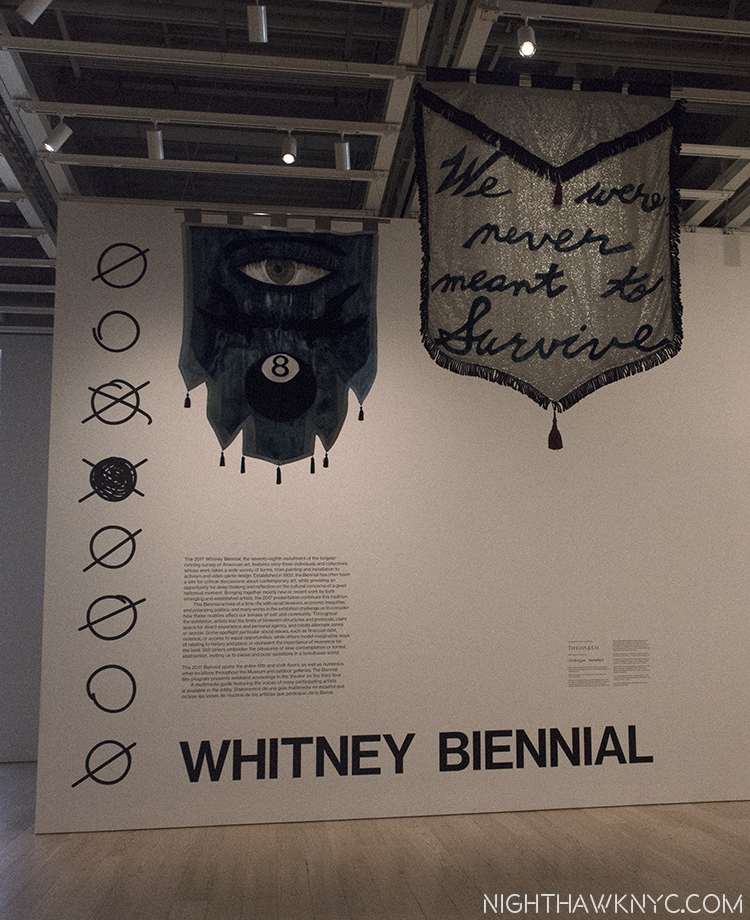
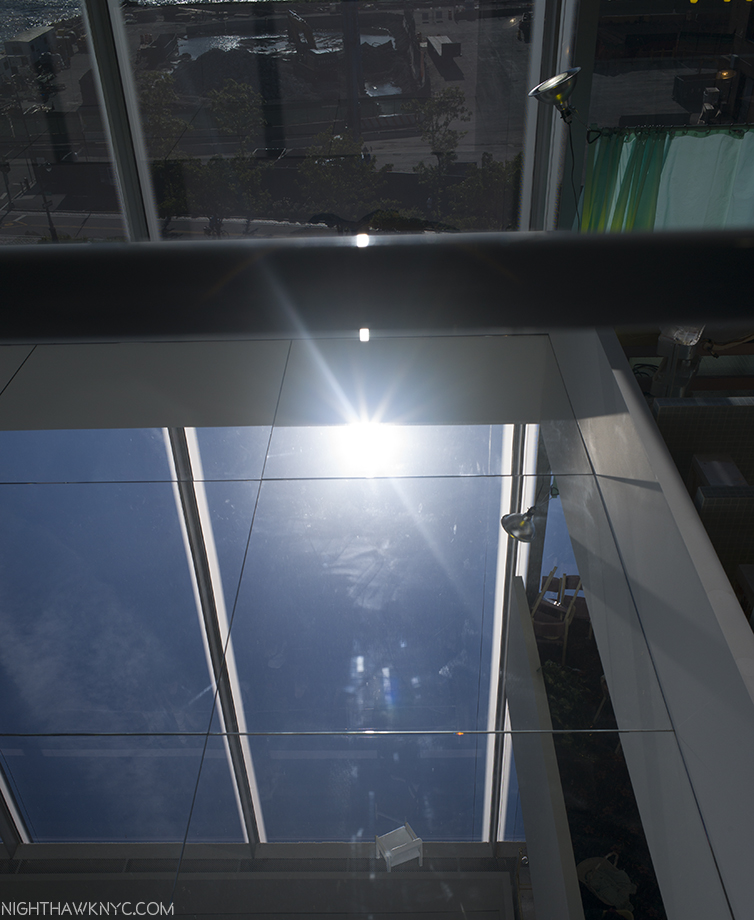
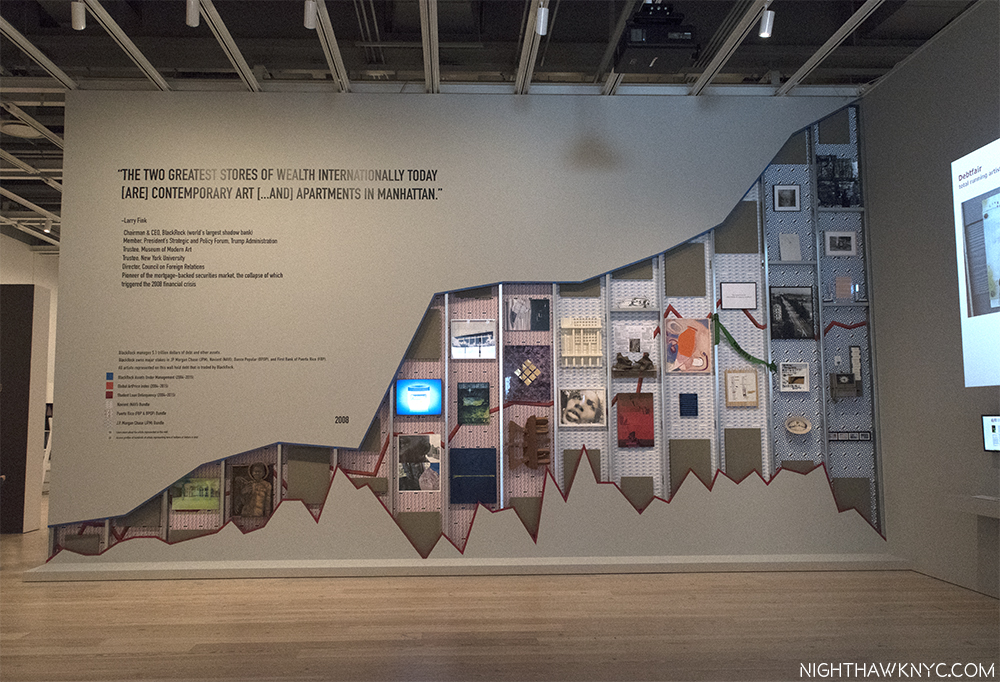
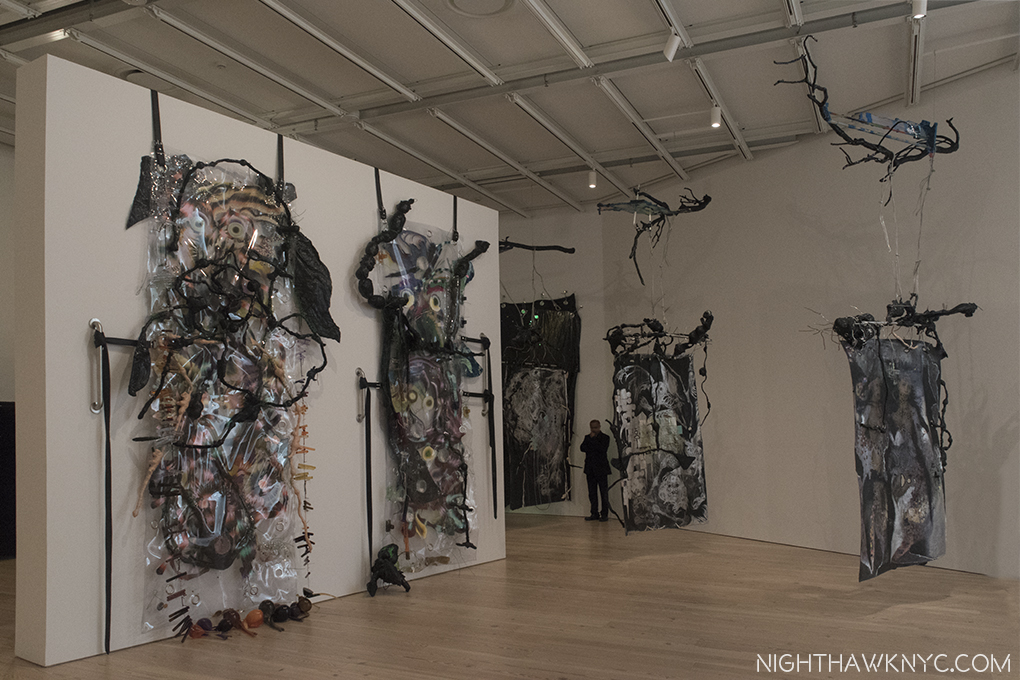
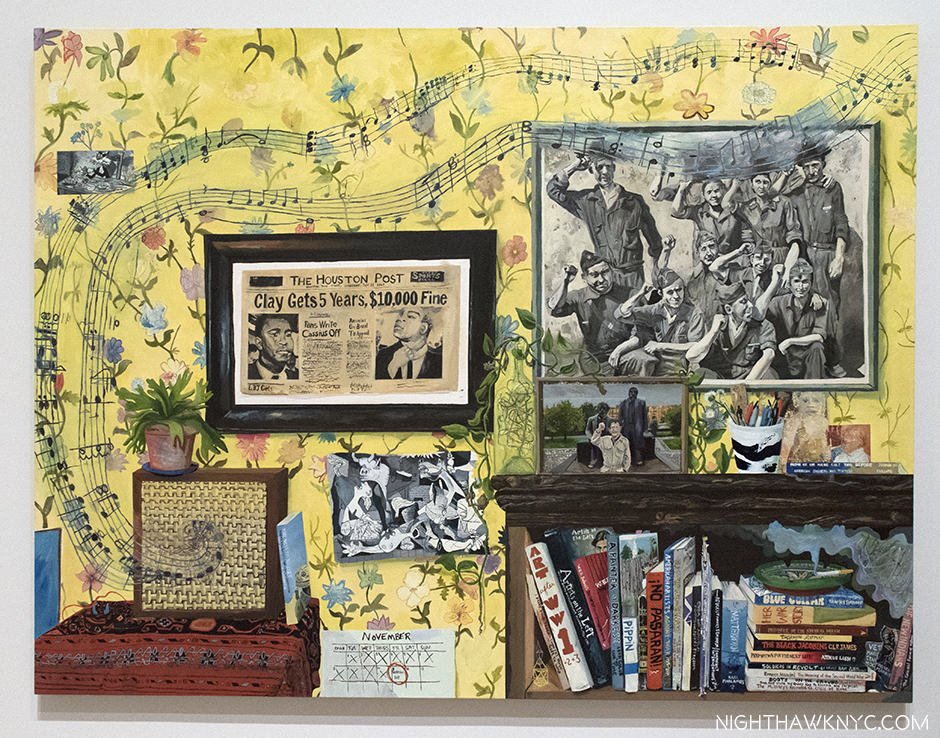
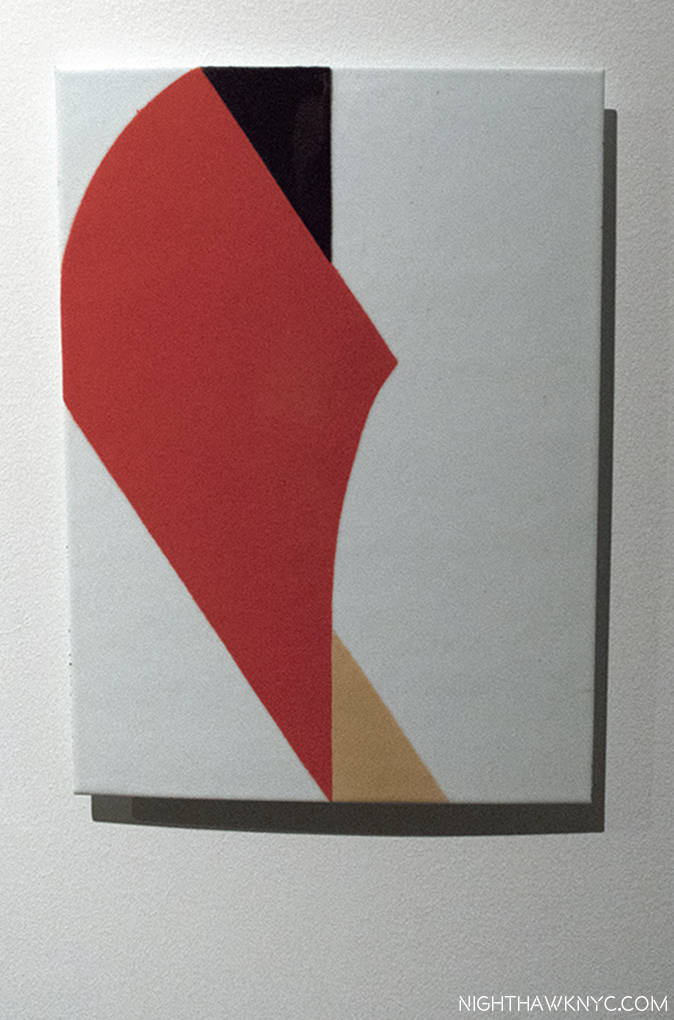
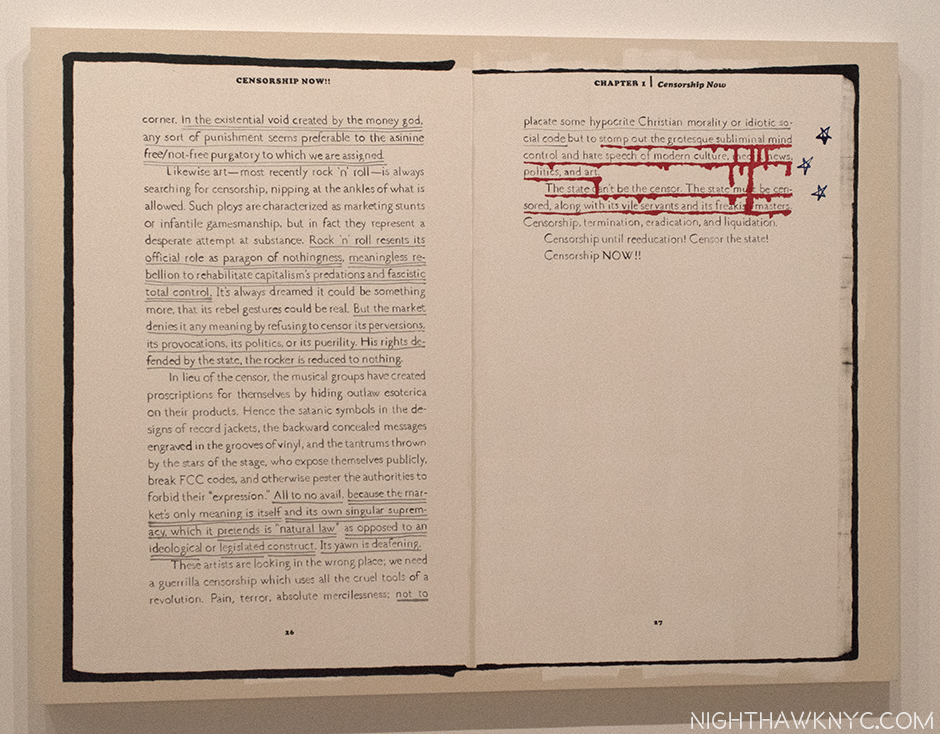
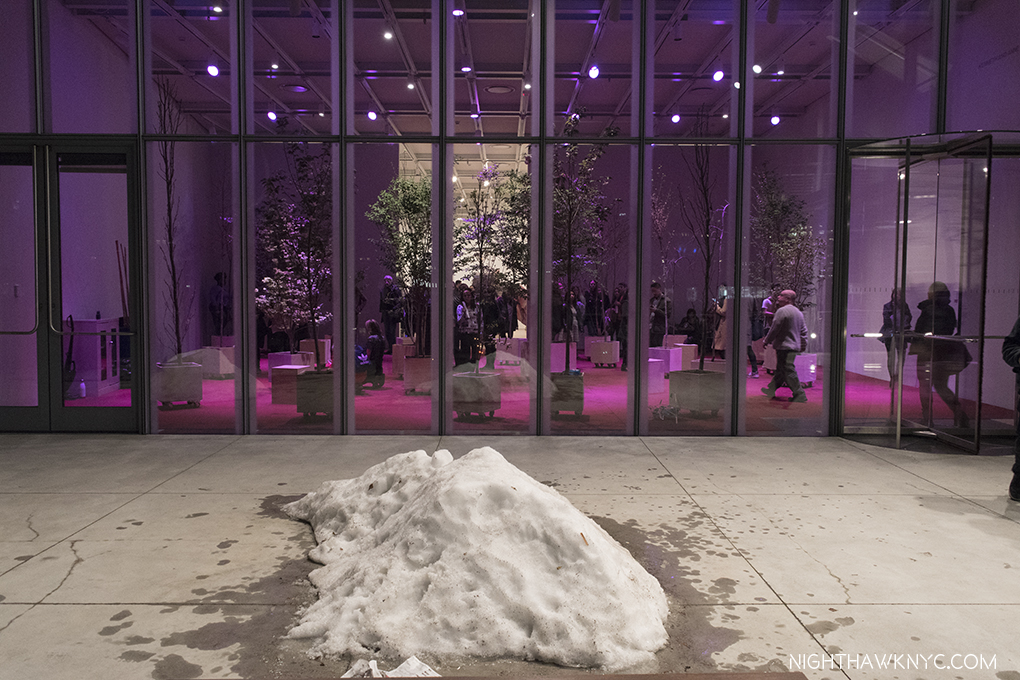
![]() In line with my ongoing policy against being negative about Art or Artists, I’m not going to get specific about the latter. With regards to the former, there is a long list of Painters and Photographers, especially, who I feel are serious omissions. Here’s a short list-
In line with my ongoing policy against being negative about Art or Artists, I’m not going to get specific about the latter. With regards to the former, there is a long list of Painters and Photographers, especially, who I feel are serious omissions. Here’s a short list-